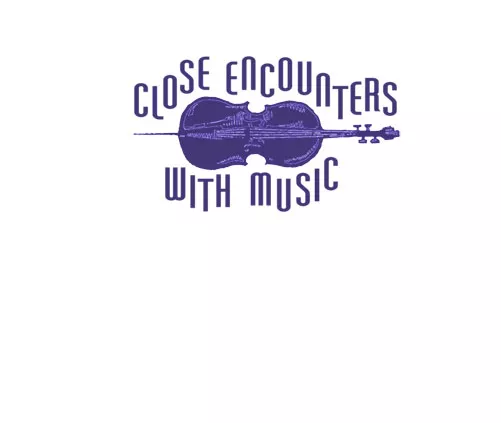Beethoven Cello Sonatas: Nos. 1-5. Variations on a Theme from Handel’s Judas Maccabaeus. 12 Variations on Ein Madchen oder Weibchen. 7 Variations on Bei Mannern, Welche Liebe fuhlen Yehuda Hanani (vc); Walter Ponce (pn) Eroica 3300 (2 CDs: 140:02)
Beethoven’s cello sonatas have been getting a lot of playtime lately. This is the latest to vie for attention, though it’s not the most recently recorded. It was taped in two stages, the first in January 2006, the second in March that same year. The venue was the acoustically near-perfect Music Hall at the Troy Savings Bank in Troy, New York.
I was a bit critical of cellist Li-Wei Qin’s release of these works, the last version of them to come to me for review, in part, at least, because his survey didn’t include Beethoven’s three sets of variations for cello and piano, which, to the best of my recollection, every release I’ve reviewed and with which I’m familiar with does. The short playing time of Qin’s two-CD set was thus a factor that had to be considered.
With Hanani and Ponce we’re once again back to the almost all-inclusive compilations, though there is still the horn sonata Beethoven wrote for Giovanni Punto and then transcribed for cello. Though there are a number of variously coupled recordings of the cello version, cellist Miklós Perényi together with pianist András Schiff made the only set I’m aware of that offers the “Punto” along with the five numbered sonatas and the three sets of variations, all on two ECM CDs.
Native Israeli cellist Yehuda Hanani, professor of cello at the University of Cincinnati College Conservatory of Music, studied with Leonard Rose at Juilliard and with Pablo Casals. It should come as no surprise then that Hanani possesses Rose’s tonal amplitude and Casals’s intellectual discipline, breathtaking technique, and limpid style. What happens when you merge the two together? Well, if I once described Rose as the Ethel Merman of the cello, it would be as if the singer had been trained and possessed the discipline and technique to take the lead role in a Handel opera. A Semele simile, of course, would be a bit of a stretch in this context, but the point is that Hanani assimilated the best that two rather different cellists and their different approaches to playing the cello had to offer him.
The results are everywhere manifest in these performances of Beethoven’s works for cello and piano. We hear the tonal bloom, the sheer bigness of sound Hanani draws from his unidentified instrument, immediately and consistently throughout the two early op. 5 sonatas. These are big, bold, modern recital hall readings, not played down to drawing room scale, which is how they likely would have first been heard at the Prussian court of King Friedrich Wilhelm II, as performed by one of the Duport brothers; though with Beethoven at the keyboard, I wouldn’t bet the farm that the playing was reservedly polite or mindful of the royal presence. These sonatas were, after all, written for Wilhelm, and though he wasn’t playing them himself—and possibly couldn’t with his limited technique he must have gotten off on the thrill vicariously.
Large in conception as Hanani’s and Ponce’s performances are, however, these are not the type of hyper-romanticized readings I was rather critical of in my reviews of Zuill Bailey/Simone Dinnerstein in Fanfare 33:2 and Friedrich Klcinhapl/Andreas Woyke in 33:3. Hanani and Ponce do not pull tempos about or indulge in excesses of any kind. Yes, this is playing projected to the back rows of a fairly sizeable hall; that cannot be denied. But within that scale, the performances are tasteful, stylish, and true to the scores.
By the time we reach the A-Major Sonata, op. 69, we’re in a different musical universe, and it’s fascinating to hear how Hanani and Ponce adapt their approach. This is a score that stylistically has much in common with the op. 70 piano trios, of which the second is the famous “Ghost” Trio. The work ended up with a dedication to Baron Ignaz von Gleichenstein, one of Beethoven’s physicians and probably responsible for helping the composer to secure an annuity of 4,000 florins. But Gleichenstein didn’t play the cello, and the sonata was first performed by Josef Linke, described as a “slightly deformed orphan from Breslau,” who, despite his deformity, must have been a very accomplished cellist because he was immediately taken on by the Schuppanzigh Quartet.
The sonata has a certain improvised quality about it. Lyrical passages are abruptly interrupted by rapid-fire bursts of energetic passagework, strictures of sonata form are loosened, and except for a brief slow introduction to the first movement, the work has no slow movement. As noted above, the style of the piece and to some extent its content are closely related to its op. 70 cousins.
Honesty compels me to report that not all goes perfectly in Hanani’s execution; his fingers have a bit of a disagreement with the fingerboard as to exactly where they need to go at around 1:42 in the first movement, resulting in some questionable intonation. But after that, all goes swimmingly. As mentioned, he and Ponce alter their approach somewhat from that taken in the op. 5 sonatas. Here, in keeping with the more expansive and expressive nature of the music, their phrasing is broader than and not quite as pressed as it was earlier.
With the op. 102 sonatas, we enter into the intellectual discipline of fugue and the more rarefied atmosphere of Beethoven’s later style. Once again, Hanani and Ponce adopt subtle changes in their approach that suits the music’s tone. I now sense what I would call an exploratory spirit to their playing, a willingness to linger longer and probe deeper into the significance of the notes. The results are expressive and revealing.
The three sets of variations are charming, if lightweight, Beethoven divertissements, played with appropriate style and poise.
This latest arrival in the Beethoven cello sonata convoy will not displace my favorite version of these works, which, for some time now, has been that by Daniel Müller-Schott and Angela Hewitt on Hyperion. But I’ve made room on the shelf right next to them for this very fine set from Yehuda Hanani and Walter Ponce. If you have room on your shelf for one more, this one can be definitely recommended. Jerry Dubins


